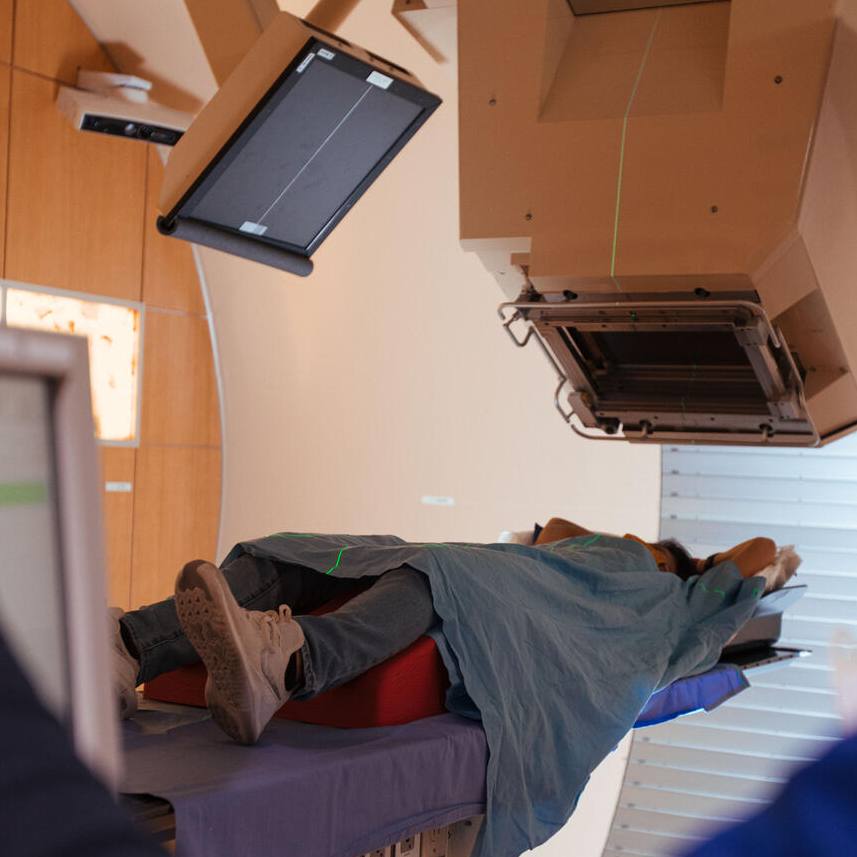-
Solid 2011 Performance Sets Mayo Clinic on Path to Redefine Future of Health Care
Mayo Clinic today reported a solid performance in 2011 and shared plans for growth in services and programs to meet the needs of tomorrow's patients in new and different ways.
Mayo Clinic has evolved to become a vast not-for-profit national and international medical organization that treats 1 million patients each year, with annual revenues of $8.5 billion. Mayo Clinic's more than 58,000 employees provide essential health care services to patients from more than 135 countries.

"Mayo Clinic creates, connects and applies integrated medical knowledge to deliver the best health care, health guidance and health information to people everywhere," says John Noseworthy, M.D., Mayo Clinic president and CEO. "Our employees make the impossible possible for our patients every day. Their dedication to our mission makes me confident about how we will redefine the future of health care."
As an example, in 2011, Mayo Clinic launched the Mayo Clinic Care Network, a network of provider organizations that have access to Mayo expertise and physicians to help them care for their patients closer to home whenever possible. Altru Health System, Grand Forks, N.D., was the first member to join the Mayo Clinic Care Network. Kingman Regional Medical Center, Kingman, Ariz., has also been added to the network.
Dr. Noseworthy says that to continue to advance its mission, Mayo Clinic must create even tighter links between research and patient care. "We never give up until we find answers for our patients," he says. "Our unique environment brings together the best in patient care, groundbreaking research and innovative medical education."
One way Mayo is making tighter connections between research and patient care is with the creation of Mayo Clinic's three new centers: The Center for the Science of Health Care Delivery, The Center for Individualized Medicine and The Center for Regenerative Medicine.
"These three new centers represent strategic investments in the future of health care," Dr. Noseworthy says. "By making these investments, we can reduce costs, advance medicine and enhance both individual and population health."
Another example of delivering care in new ways is Mayo Clinic's Telestroke Network, which serves rural residents in geographic areas without access to neurological expertise. Mayo Clinic in Arizona started the telemedicine stroke program when statistics revealed that 40 percent of Arizona residents did not live in an area with stroke expertise. The program uses a digital video camera and Internet telecommunications to perform live, real-time audiovisual consultations on patients who have suffered an acute stroke. Studies show it is cost-effective and improves outcomes for patients.
On the educational front, Mayo Clinic is advancing medicine with a new medical school branch campus in Arizona that will focus on teaching medical students about the science of health care delivery as a part of their medical education. This program will address the changing needs of 21st century health care delivery and redesign medical education in ways that will transform the future of health care.
Shirley Weis, the clinic's vice president and chief administrative officer, says that Mayo Clinic's strong operational performance and financial stewardship allow strategic investments in the future of health care. "We anticipate that the next three to five years will be marked by higher-than-average job growth and continued capital spending as we execute a set of strategic initiatives designed to meet patients' evolving needs," she says.
Weis highlighted these key accomplishments in 2011:
- Mayo Clinic cared for more than 1 million patients at its campuses in Minnesota, Florida, Arizona and Mayo Clinic Health System, a network of clinics, hospitals and health care facilities serving more than 70 communities in Minnesota, Iowa and Wisconsin.
- Mayo research programs garnered nearly $367 million in external funding. About 7,725 active human studies were under way in 2011.
- The College of Medicine, Mayo Clinic educated 2,446 students, and 1,491 residents and fellows.
- Fortune magazine named Mayo Clinic to its select list of the "100 Best Companies to Work For" in 2011. This marks Mayo's 9th consecutive year on the magazine's annual compilation of companies that rate high with employees.
In the coming year, Mayo Clinic will continue to invest in practice innovation, education and research. "In 2012, Mayo Clinic will launch $600 million in capital projects," Weis says. "We estimate spending $700 million per year in capital projects for the next five years."
This commitment to capital spending includes both ongoing and new projects. Ongoing projects announced in 2010 and 2011 include the proton beam therapy program, expansion of the Dan Abraham Healthy Living Center, expansion and renovation to the Emergency Department at Saint Marys Hospital in Rochester, Minn., and improvements to Mayo Clinic Health System sites in Austin, Minn., and Barron, Wis. New projects include the Center for Regenerative Medicine, Center for Individualized Medicine, Center for the Science of Health Care Delivery and others.
Financial Highlights
Mayo Clinic experienced strong revenue growth in 2011 despite the challenging economic environment, with growing surgical volumes and by serving patients that tended to have more serious medical issues. At the same time, Mayo Clinic was able to control expenses through re-engineering and process improvement efforts.
"As a humanitarian not-for-profit organization, Mayo Clinic is not in the business of making money for money's sake. All of the earnings of Mayo Clinic are reinvested in fulfilling our mission," says Jeff Bolton, Mayo Clinic's chief financial officer.
Some key financial highlights:
- Mayo Clinic built on its solid 2010 financial performance, ending 2011 with more than $610 million in income from current activities — or net operating income — which translates to an operating margin just over 7 percent and aligns with the clinic's long-term objectives.
- Patient volumes remain steady, but Mayo Clinic continues to see a mix of medically complex patients.
- Benefactors, primarily grateful patients, contributed $318 million to fund Mayo Clinic programs in practice, education and research.
- In 2011, the total budget for education and research programs was $839 million, with Mayo Clinic investing nearly $421 million.
- Securing Mayo Clinic's pension fund continues to be a priority and underscores Mayo Clinic's commitment to its staff. Mayo Clinic made an additional 2011 cash contribution to the pension fund of $196 million in December, bringing the total contribution in 2011 to $384 million.
Operational Performance in Selected Categories
| 2011 | 2010 | 2009 | |
|---|---|---|---|
| Total number of employees | 58,322 | 56,077 | 55,930 |
| Midwest employees | 47,741 | 46,239 | 46,263 |
| Florida employees | 5,057 | 4,771 | 4,771 |
| Arizona employees | 5,524 | 5,067 | 4,956 |
| Total clinic patients* | 1,113,000 | 1,081,000 | 528,000* |
| Clinic patients (Rochester, Florida, Arizona) | 554,000 | 533,000 | 528,000 |
| Clinic patients (Mayo Clinic Health System)** | 559,000 | 548,000 | ** |
| Total revenue from current activites (millions) | $8,475.7 | $7,942.0 | $7,582.1 |
| Total expense from current activities (millions) | $7,865.5 | $7,426.7 | $7,248.9 |
| Income from current activites (millions) | $610.2 | $515.3 | $333.2 |
| *Individual patients are counted once annually and included patients from Mayo Clinic Health System for the first time in 2010. Numbers for 2010 restated. **Reported for first time in 2010. |
|||
"I believe the door to our future is open wide, and the pathway is clear," says Dr. Noseworthy. "Today, we take the best of what Mayo has done for nearly 150 years into the dawn of the next century. With technology and partnership, we will redefine the future of health and health care."
Media Contact: Karl Oestreich, 507-284-5005 (days), newsbureau@mayo.edu







